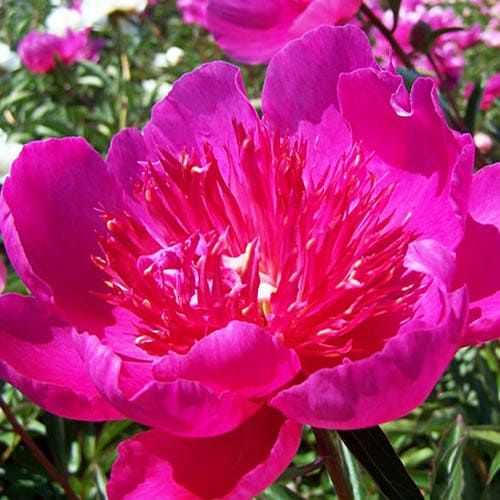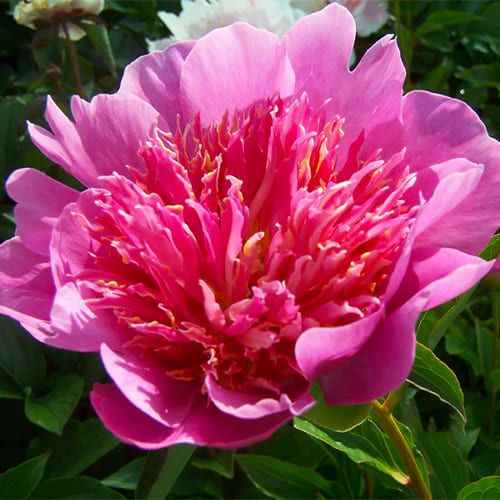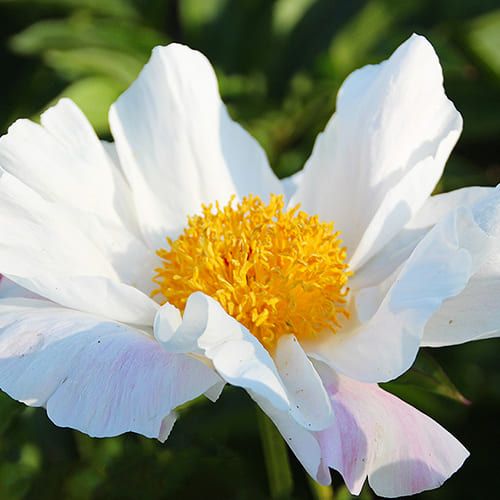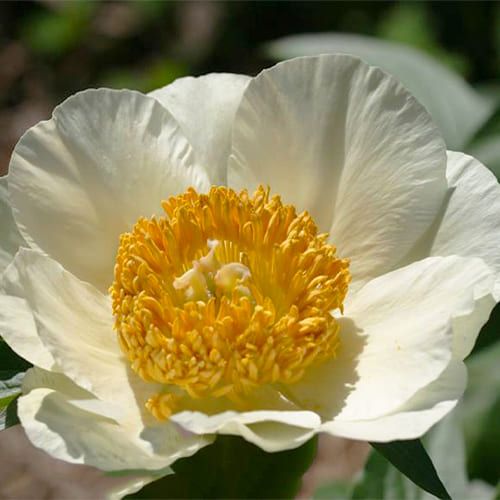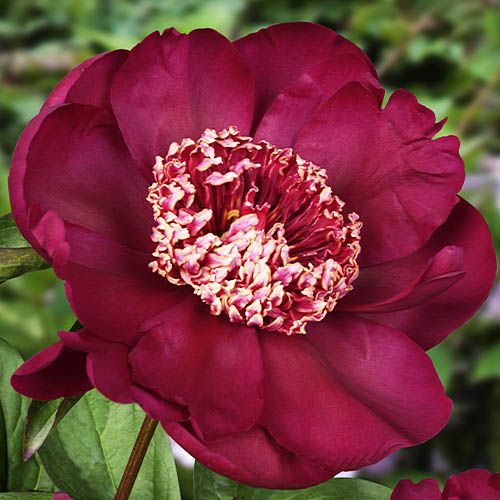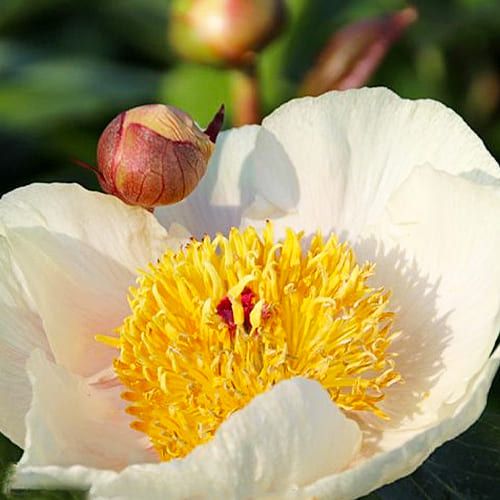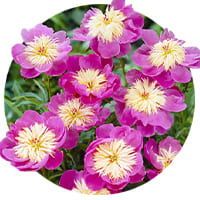
Anemone Peonies
Anemone Peonies
Last Reviews
The Basics of Growing Anemone Peonies: Tips and Tricks for New Gardeners
For anybody who enjoys gardening and is searching for a distinctive and aesthetically pleasing flowering plant, anemone peonies are a must-have. Anemone peonies are a gorgeous addition to any garden or house interior because of their eye-catching colors and distinctive appearance. We'll discuss some helpful advice in this article for novice gardeners who want to develop anemone peony.
Finding the Perfect Spot: Where to Plant Anemone Peonies for Optimal Growth

Anemone peonies are a lovely addition to any garden, but for best growth and blooming, they must be planted in the right spot. For your convenience, here are some suggestions for where to look.
Depending on your climate and the amount of sunlight your garden receives, anemone peonies prefer full sun or partial shade.
Soil requirements: Anemone peonies require well-drained, nutrient-rich soil. Planting them in heavy clay or compacted soil is not recommended.
Air circulation: Anemone peonies require proper air circulation to avoid fungal diseases. Plant them in an area that is not too crowded or where the air does not circulate well.
Climate assurance: The delicate Anemone Peony can be damaged by strong winds, heavy rain, and extreme temperatures. To keep them safe, plant them in a secure location.
Planting Anemone Peonies: Tips and Tricks for a Successful Garden
If you want to brighten up your yard and add color, you might want to plant anemone peonies there. To get you started, here are some suggestions:
Choose anemone peonies that are in proper health and show no symptoms of pests or disease when you want to buy them.
Anemone peonies should be planted in the fall, preferably in September or October.
Before planting, prepare the soil by making sure it has enough nutrients and is well-drained. Compost or other organic matter can be added to the soil to increase its quality.
Make sure the hole you use to plant the anemone peony is large enough to accommodate the plant's whole root system. However, it is not so large that earth will cover the top of the root ball.
Water frequently: Anemone peonies require frequent watering, especially during the first growing season. Maintain moist but not waterlogged soil.
Fertilize sparingly: Anemone peonies don't require much fertilizer, but a small amount in the spring can aid in growth and flowering.
Caring For Anemone Peonies: A Comprehensive Guide to Maintaining Healthy Plants
Caring for anemone peonies is essential for keeping them healthy and blooming year after year. Here are some pointers for caring for anemone peonies.
Watering: Anemone peonies require regular watering, especially during the first growing season. Maintain a moist but not waterlogged soil. Depending on the weather and soil conditions, water deeply once or twice a week.
Fertilizing: Anemone peonies don't require much fertilizer, but a small amount applied in the spring can aid in growth and flowering. Use a fertilizer that is balanced or high in phosphorus, which is necessary for flower production.
Deadheading is the process of removing spent flowers from plants. This stimulates the plant to produce more flowers, extending the blooming season. Cut the stem just above the next set of leaves with clean, sharp scissors.
Anemone peonies are generally disease-resistant, but they can be affected by fungal diseases like botrytis or powdery mildew. To avoid these diseases, keep the plant well-ventilated and avoid overhead watering. If you notice disease symptoms, remove the affected leaves or stems and throw them away.
Winter protection: Anemone peonies are hardy plants, but in colder climates, they may require some winter protection. To keep the roots from freezing, cover the plant with mulch or straw.
Propagating Anemone Peonies: How to Expand Your Collection of These Beautiful Blooms
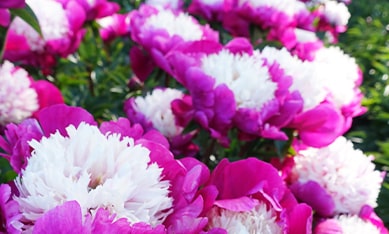
If you want to increase your collection of anemone peonies, you can propagate them. In Dutch-bulbs.com we have some tips for growing anemone peonies:
Division is the easiest and most common method of propagating anemone peonies. Wait until the plant is dormant in the fall, then dig it up and carefully divide the roots into smaller clumps. You can replant these clumps in a different location or pot.
While anemone peonies can also be propagated from seeds, this method is more time-consuming and less predictable. After the flowers have finished blooming, collect the seed pods and allow them to dry. Keep the seeds moist in a well-drained soil until they start to sprout.
Your Guide to Buying Anemone Peonies: Tips and Advice for Choosing the Perfect Plants
Here are some suggestions and advice to assist you in selecting the best plants if you want to purchase anemone peonies.
Make careful to get anemone peonies from a reputable merchant that specializes in these flowers. Seek for comments and advice from other gardeners.
Before making a purchase, check the plants for illness or pests. Check the leaves for holes, dark patches, or yellow or wilted leaves. Don't buy plants that are contaminated or damaged.
Choose wholesome plants: Choose plants that are free of pests and diseases. Ideal plants have thick, robust roots, healthy leaves, and strong stems. Consider the color and size: Anemone peonies are available in a variety of colors and sizes, so select the ones that will suit your garden and personal preferences.
Frequently asked questions about Spring Flowering Anemone Peonies
Are there any seasonal restrictions for buying Dutch anemone peonies in your shop?
Answer: Anemone peonies are usually available during the spring and early summer months. However, availability may vary per variety and region. We recommend visiting our shop regularly to see which anemone peonies we currently offer.
Are anemone peonies poisonous to pets?
Answer: Yes, anemone peonies are poisonous to pets such as cats and dogs. It is recommended to keep them out of reach of pets and make sure that no leaves or flowers are eaten by your pets.
What other flowers or plants go well with Danish anemone peonies in a bouquet?
Answer: Anemone peonies combine beautifully with other spring flowers such as tulips, daffodils and hyacinths. Green foliage such as eucalyptus or lettuce can also be a nice addition to liven up the bouquet.
Can I buy anemone peonies in your shop?
Yes, you can buy anemone peonies in our online flower and plant shop. We offer a selection of different varieties and colours, which may vary depending on availability.
What care do anemone peonies need?
Anemone peonies need well-drained soil and plenty of sunlight to thrive. They should be watered regularly, but waterlogging should be avoided. The plants should be cut back in autumn.











